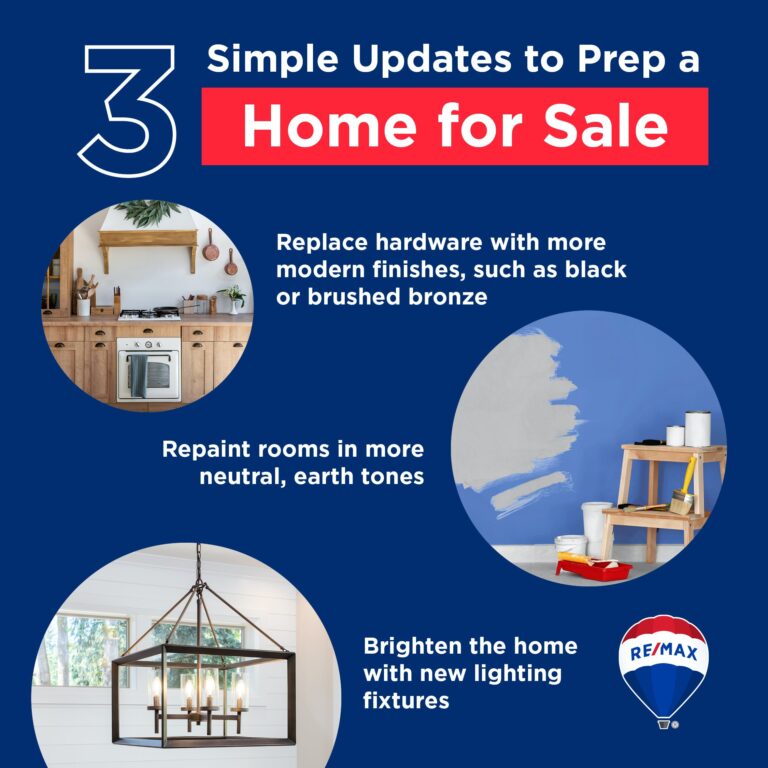
As the housing market continues to rebalance, alternative homebuying trends could help more people achieve homeownership.
Bob Dylan likely said it best: “The times, they are a-changin’.” This is especially true in the real estate market.
According to the January RE/MAX National Housing Report, the Median Sales Price currently sits around $385,000 – down 1.0% from December 2022 but still up 1.3% from a year ago. And Bankrate reports that the current average 30-year fixed mortgage interest rate is hovering around 7%.
Meanwhile, Statista reports that in February 2023, inflation amounted to 4.2%, while wages grew by only 3.2%, leaving some prospective homebuyers wondering how to make it all add up so they can purchase a house.
For some would-be first-time homebuyers who are emotionally ready to invest but struggling to save for the down payment or fret having high monthly payments, renting with a roommate can help split the costs, but it doesn’t build equity – a key component to building wealth. The prospect of buying a house with someone, even if it’s not a romantic partner, comes to mind. But is that a good idea? Will the benefits outweigh the potential risks?
What to consider in joint homeownership
Christopher Audette, an agent with RE/MAX First in Calgary, Alberta, says with inventory issues and the current cost of rent, it makes sense for people to come together and pool resources when considering becoming homeowners.
“It can be the launchpad that’s needed for people to get into homeownership so they can build equity,” he shares.
While it’s a less common practice to purchase a house with a non-romantic partner, the trend could start to emerge for homeowners – especially from younger generations – to co-purchase with a family member, or friend. Even parents and children are considering this route.
“The sooner one can get into real estate ownership, the sooner they can begin to build wealth,” says Joe Allen, an agent with RE/MAX Results in Edina, Minnesota. “If partnering with somebody to buy a home is going to allow them to do it sooner than later, I think it’s a smart avenue to explore.”
However, when it comes to purchasing property with a non-marital partner, there are also some risks to be aware of. Apart from the necessary finances, another aspect to consider is the emotional toll it can take.
“Homeownership is very emotional. If you go into it with a friend, it can be hard for some people to compartmentalize friendship and business,” explains Shannon Murree, an agent with RE/MAX Hallmark in Barrie, Ontario.
And while the friendship outside of the house might be a great fit, it doesn’t always transfer to homeownership. Murree advises those considering house hunting with friends to assess the compatibility of their lifestyles, including how they handle finances and their level of cleanliness.
Audette agrees, noting, “Buying with a friend can lead to resentment when one person is putting more into things like renovations or home maintenance, or even day-to-day tasks like cleaning. Or, they could both be single at the time they enter the agreement, but then one gets into a primary relationship and now there’s a third person who’s constantly there as well. These are factors that should be thought of upfront as they can lead to hard feelings.”
While some of these are also risks for any married couple, Allen believes they can be even more pronounced for non-married partners.
“If you’re married and then get divorced, there’s a court system to help you divide assets. If you’re not married and one homeowner decides they want out or want to sell, there’s no system in place to help you do that,” he says.
Consequently, Allen says one of the smartest things someone can do when they’re considering joint homeownership is to engage an attorney and come up with an agreement where the parties determine how they would handle a sale or buyout.
It is highly encouraged to take all considerations into account before purchasing jointly. And, as Audette clarifies, there’s no need to rush the process.
“Don’t be cavalier about the legal aspect of it. Don’t do it now and figure it out later. Figure out the logistics now.”
Handling finances and setting expectations
For those interested in this pathway to ownership, working with skilled and knowledgeable professionals – a real estate agent and a mortgage broker – is key. There are quite a few nuances and differences when purchasing real estate jointly versus as a married couple or individual.
Chuck Simmons, a mortgage broker with Motto® Mortgage in Ankeny, Iowa, explains when a married couple applies for a home loan there is one application that looks at both parties’ credit score, income, and debt. The process is typically an open book to both sides. When applying as two unmarried individuals, there are two applications looking at the same criteria, but the flow of information is not as fluid.
Simmons says when married couples apply for a mortgage, they ultimately give permission to talk to both sides, but single applications are closed to each individual applicant. So, if there’s an issue with one person’s income or credit, the mortgage broker can’t openly talk about that issue with both parties – they can go directly to only the applicant.
“Depending on the disparity, I will call the person and say, ‘Are you okay with me having this conversation with everyone?’ just so that they understand there might be some personal things we need to work through but it’s going to affect if they can get approved or not,” Simmons says.
When two applicants file for a home loan, the lender must use the lower of the two credit scores, which can affect the interest rate and ultimately save or cost thousands of dollars.
Allen says to consider looking at this joint venture as a business partnership.
“Build a business partnership around the property and choose your partner well,” he advises.
The planning portion of this venture should be a high priority and extremely thorough. Partners should create a business plan and have everything laid out on paper from the get-go, from who will take which room to what happens if someone wants out, and everything in between.
“A lot of homes are set up for families,” explains Jeff Feldman, an agent with RE/MAX Results in Edina, Minnesota. “So, there will be tradeoffs – one might get the owner’s suite while the other gets the garage. Other agreements will come when something goes awry. What happens if the furnace needs to be replaced? You’ll need to agree on which brand, the cost, what contractor to use, and level of efficiency. Putting certain guidelines on paper up front will help down the road.”
The process – and agreements that come in tow – can also differ depending on the type of property one is purchasing, be it a primary residence, vacation property, or payment partnership.
“There’s a difference between an occupant co-borrower and non-occupant co-borrower,” Simmons says. “If it’s two brothers buying together and both plan to live in the house full-time, there are standard [loan] programs available. If it’s a parent who’s helping a child with a down payment, they may not be able to take advantage of certain programs.”
Real life application
Homeowners Michael Smith and his wife purchased a secondary property in the mountains with good friends and co-owned the home for over a decade. Smith says there were definitely learning curves, but overall, it was a great experience for them. He believes things worked out so well because they laid out the ground rules right away and had parameters around arrival and departure times, who cleaned what, and even appropriations of the slush fund for repairs and replacements.
“I think it really helped that both families were in similar financial positions, and had similar lifestyles and mindsets,” Smith shares. “From the beginning, we chose a bank that neither of us previously belonged to so any mail that came from them we knew was in reference to the property. We opened a joint bank account which each family fed to be able to pay for maintenance and repairs. We even had a small cash deposit made to the property bank account of $10 or $20 if we had extended friends or family with us, just to account for additional wear and tear.”
Friends Dan Kenney and J.T. Williams purchased a primary residence together in a Northeast Minneapolis neighborhood in 2005 when they were just 24 years old. They lived together as co-owners for a number of years and took a less conventional route to figuring things out.
Admittedly easy-going guys, Kenney says that while some things – like deciding who got the bigger room – came down to rock-paper-scissors, other more important things were taken seriously.
“Our personalities complemented each other and we were able to decide in the moment what was needed or not needed. If we needed it, we did it together, 50/50.
“We also always wanted to make sure our friendship stayed intact. We knew there were going to be ups and downs, but we kept our friendship paramount.”
Just as important as figuring out what living arrangements will lead to the best living experience is asking what happens when one partner wants to exit.
Implementing an exit strategy
For the Smiths and their co-owners, life evolved and they found themselves using the mountain home less and less. When they all decided to sell, they chose to unload on the whole.
“When we purchased the home, we had to furnish it from the ground up and so when we sold it, we sold everything and split the proceeds 50/50,” Smith says.
Alternatively, for Kenney and Williams, they decided to transition the property from owner-occupied to a rental and use it as an investment property – a situation that worked well for them until they eventually sold.
While buying a house jointly with a non-marital partner is not as common of a route, and does come with some risks, Murree says it’s still worth it.
“It’s unconventional. It’s creative. It’s risky. But if you need a place to live, you might as well earn some equity,” she says.
For those interested in joint homeownership with a family member, friend, or business partner, remember to align with a like-minded individual, plan ahead, and put it all in print. Because the times, they are a-changin’ – and there are many routes to homeownership that may be the best fit.
Article originally appeared on RE/MAX.com.







